




Your support is critical to our success.
Monatsschr. Deutsch. Kakteen-Ges. v. 89 [ Same as M. halei T. S. Brandeg.? ]. 1895
Family: CACTACEAE
Accepted Scientific Name: Cochemiea halei (Brandegee) Walton
Cact. J. (London) ii. 50 (1899), in obs.[sphalm. Hallei]
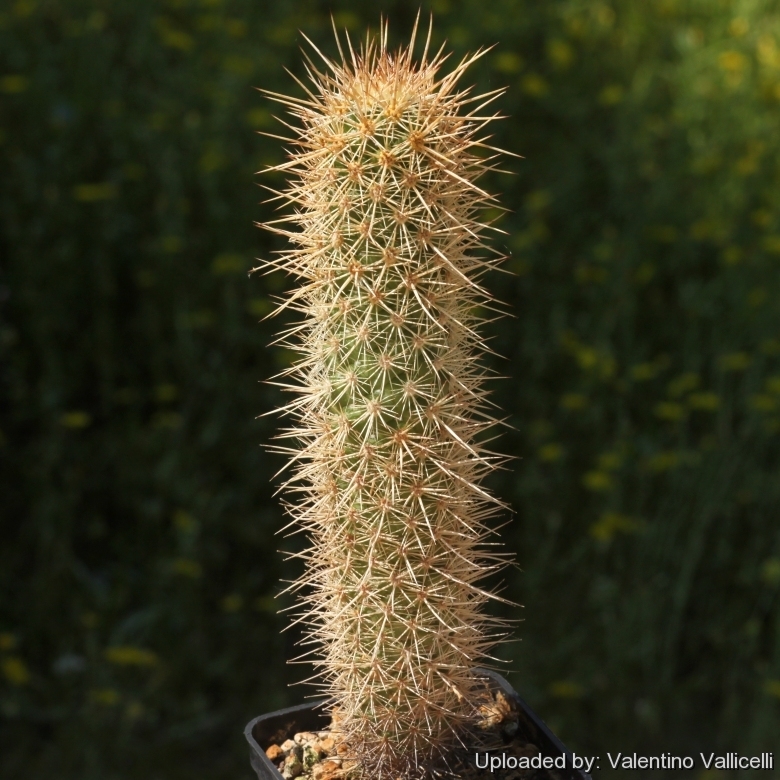
Origin and Habitat: Magdalena and Santa Margarita Islands, rarely on the adjacent mainland, Baja California Sur, Mexico.
Type locality: Magdalena Island, Lower California.
Altitude: 10-100 metres above sea level.
Habitat: It grows mostly on the sandy dunes on the beach in association with other cactus species, including Echinocereus barthelowanusSN|21867]]SN|21867]], Opuntia pycnantha, Mammillaria dioicaSN|916]]SN|916]], and the creeping devil (Machaerocereus erucaSN|7990]]SN|7990]]).
Synonyms:
- Cochemiea halei (Brandegee) Walton
- Cactus halei (Brandegee) J.M.Coult.
- Mammillaria halei Brandegee
- Mammillaria halei J.M.Coult. ex K.Schum.
Description: Cochemiea haleiSN|9635]]SN|9635]] (also known as Mammillaria halei) is a cereus like succulent, forming large clumps to 2 metres wide. It has long scarlet flowers, with characteristic backward curled petals reminiscent of Epiphyllum.
Stems: Cylindrical, nearly upright, often 30 to 50 cm high, 5 to 7,5 cm. in diameter, almost entirely covered by the spines.
Tubercles: Very short; axils of tubercles woolly but not setose.
Radial spines: 10-21, reddish brown, becoming grey, 10 to 12 mm long.
Central spines: 3 or 4, reddish brown brown, later grey, 25-35 mm long, stiff, stout and all straight (or rarely slightly curved at apex).
Flowers: Central or nearly so borne vertically, scarlet 2,5 to 5 cm long. Floral tubes long. filaments yellow; stigma-lobes scarlet.
Fruit: Club shaped, scarlet, 12 mm Long.
Seeds: Reticulated.
Bibliography: Major references and further lectures
1) Pilbeam J., “The Cactus file, Mammillaria” 6: 120, Cirio Pub. Services, 01/Dec/1999
2) James Cullen, Sabina G. Knees, H. Suzanne Cubey "The European Garden Flora Flowering Plants: A Manual for the Identification of Plants Cultivated in Europe, Both Out-of-Doors and Under Glass" Cambridge University Press, 11/Aug/2011
3) David R Hunt; Nigel P Taylor; Graham Charles; International Cactaceae Systematics Group. "The New Cactus Lexicon" dh books, 2006
4) Edward Anderson “The Cactus family” Timber Press, Incorporated, 2001
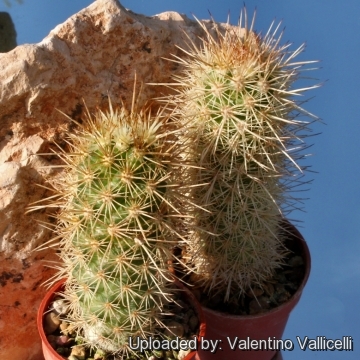
Mammillaria halei (Cochemiea halei) Photo by: Valentino Vallicelli
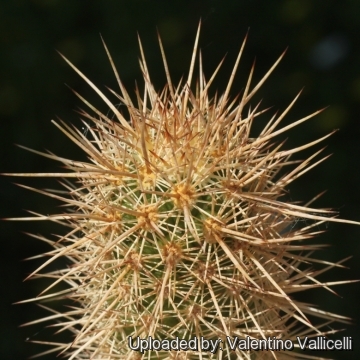
Mammillaria halei (Cochemiea halei) Photo by: Valentino Vallicelli
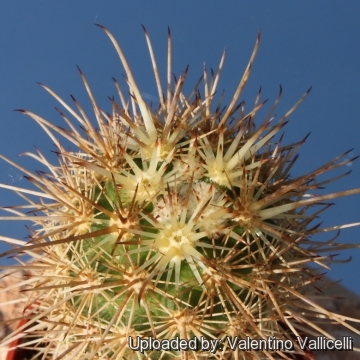
Mammillaria halei (Cochemiea halei) Photo by: Valentino Vallicelli
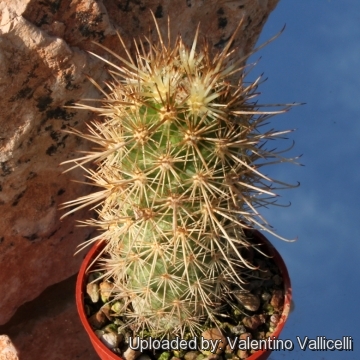
Mammillaria halei (Cochemiea halei) Photo by: Valentino Vallicelli
Cultivation and Propagation: Cochemiea haleiSN|9635]]SN|9635]] is somewhat difficult to cultivate. During the summer it is best to keep the plants outside where the temperature can rise to over 30° C with no harm to the plant, recommended for any collection that needs lots of light with ample airflow.
Growth rate: It is a small growing, but easily flowering species. It takes several years to offset, but once it starts it can form a large bunch in just a few years given the best conditions.
Soils: Use a an open and free draining mineral compost with little organic matter (peat, humus) that allows therefore roots to breath (as it is rot prone).
Repotting: Repotting every 2-3 years. As it is especially prone to rot under-pot in a smaller container filled with very porous compost. Use pot with good drainage.
Watering: It likes a winter's rest and should be kept almost completely dry during the winter months, If the soil is allowed to be dry for too long root loss could follow but equally the same result would occur if the plants are both wet and cold. From March onwards the plant will begin to grow and watering should be increased gradually until late May when the plant should be in full growth. Water regularly during the summer so long as the plant pot is allowed to drain and not sit in a tray of water. During hot weather you may need to water the plants more frequently so long as the plant is actively growing. From late September watering should be reduced to force the plant to go in to a state of semi dormancy, by October you should be back in to the winter watering regime. Keep dry with ample airflow in winter. In the rest period no high atmospheric humidity!! Care must be taken with watering as they tends to become swollen and untidy in growth habit if given too much water and shade.
Fertilization: Feeding may not be necessary at all if the compost is fresh then, feed in summer only if the plant hasn't been repotted recently. Do not feed the plants from September onwards as this can cause lush growth which can be fatal during the darker cold months. .
Hardiness: Grown specimens resist to -4°C for a short time, but it is best to keep above 5° C to avoid ugly spots on the plant epidermis. Some warmth throughout the year will increase the grower's success.
Exposition: Need full sun avoiding only the harshest summer sun, if kept too dark they may become overly lush and greener and could be prone to rotting due to over watering. Tends to bronze in strong light, which encourages flowering and heavy wool and spine production.
Uses: It is an excellent plant for container growing. It always looks good and stays small. It look fine in a cold greenhouse and frame.
Pests & diseases: It may be attractive to a variety of insects, but plants in good condition should be nearly pest-free, particularly if they are grown in a mineral potting-mix, with good exposure and ventilation. Nonetheless, there are several pests to watch for:
- Red spiders: Sensitive to red spider mite. Overhead watering is helpful in controlling mites.
- Mealy bugs: Occasionally mealy bugs they develop aerial into the new growth among the wool with disfiguring results, but the worst types develop underground on the roots and are invisible except by their effects.
- Scales: Scales are rarely a problem.
- Rot: Rot it is only a minor problem with cacti if the plants are watered and “aired” correctly. If they are not, fungicides won't help all that much.
Propagation: Direct sow after last frost or cutting. Seeds germinate in 7-14 days at 21-27° C in spring, remove the glass cover gradually as the plants develops and keep ventilated, no full sun for young plants! The seedlings should not be disturbed until they are well rooted, after which they can be planted separately in small pots. Cuttings: wait until the offsets that appear at the base of old clustered specimens are 1/3 the size of the parent and then detach and plant. Cuttings will take root in a minimum temperature of 20° C (but better in hot weather). Cuttings of healthy shoots can be taken in the spring and summer. Cut the stem with a sharp, sterile knife, leave the cutting in a warm, dry place for a week or weeks (depending on how thick the cutting is) until a callus forms over the wound. Once the callus forms, the cutting may be inserted in a container filled with firmed cactus potting mix topped with a surface layer of coarse grit. They should be placed in the coarse grit only; this prevents the cut end from becoming too wet and allows the roots to penetrate the rich compost underneath. The cuttings should root in 2 to 6 weeks.
| Your Actions | |
|---|---|
| Back to Mammillaria index | |
| Back to Cactaceae index | |
 |
Back to Cacti Encyclopedia index |
Privacy stantement - Terms and conditions - How to cite - About us - Feedback - Donate




